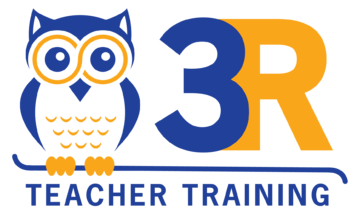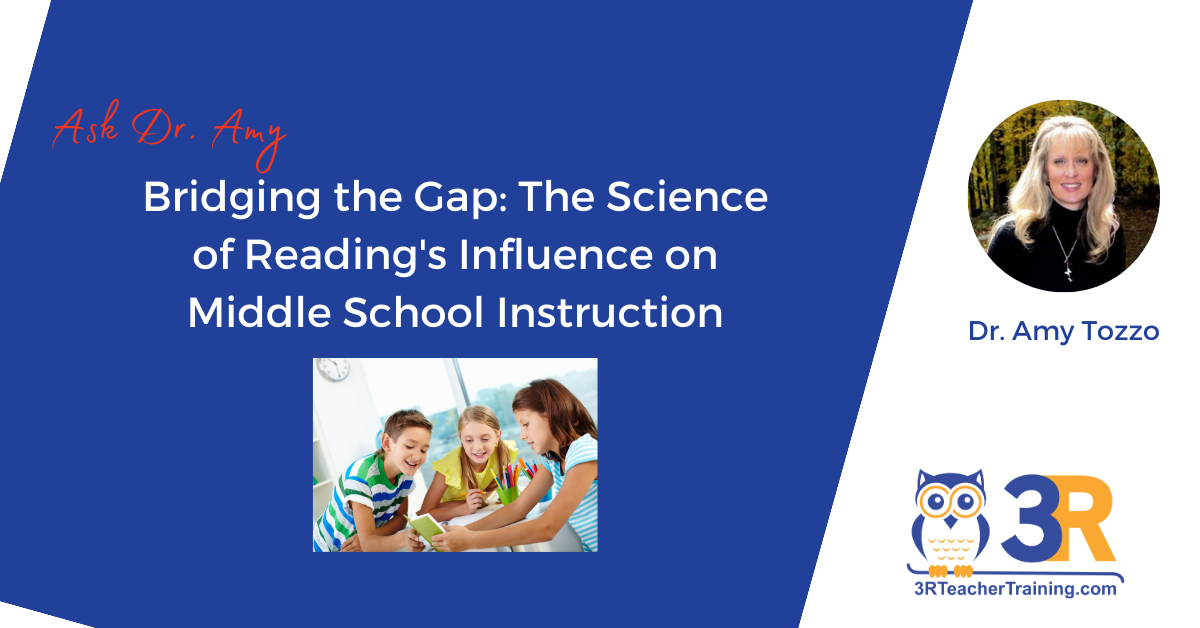This article is inspired by a series of insightful inquiries received during my recent professional development session. Below are the questions that catalyzed the creation of this piece:
- “In light of recent advancements in early literacy based on scientific research, I'm curious about the implications for middle school ELA instruction. What does current research suggest should be the focus at this level?”
- “Is there a specific point where continuing phonics instruction for students in middle school becomes less beneficial?”
- “Considering the time constraints in a middle school schedule, what are the key areas of literacy that should be prioritized?”
- “Regarding parental inquiries, should phonics instruction extend into middle school? If so, for which students might this be necessary?”
- “I presume Tier 1 instruction at this level might lean more towards advanced structured literacy aspects, such as morphology. What does the research indicate about the effectiveness of teaching phonics to middle school students?”
Predominantly, phonics instruction research has concentrated on early educational stages, preschool, kindergarten, and first grade. Esteemed panels such as the National Early Literacy Panel (NELP) and the National Reading Panel (NRP) have underscored the tangible benefits of such instruction. These include enhanced abilities in word and nonsense word reading, spelling, oral reading fluency, and comprehension. Therefore, integrating explicit and systematic phonics into a comprehensive literacy program for beginning readers is an evident choice.
However, the landscape changes somewhat for grades 2 and beyond. Here, research is sparser and primarily targets readers facing challenges, including dyslexia. This narrow focus raises questions about the effectiveness and applicability of these findings in standard classroom settings. The NRP, despite its findings from over two decades ago, noted limited benefits of phonics instruction beyond kindergarten and first grade.
To provide a contemporary perspective, I delved into more recent studies concerning phonics in middle and high school settings. Unfortunately, the few studies available did not present a robust endorsement for such instruction. For instance, Lingo (2014) observed fluency improvements in a study where high school students tutored sixth graders in phonics, but it's unclear if these gains were directly attributable to phonics instruction. Other studies, like that of Hutcheson, Selig, & Young (1990) and Denton et al. (2008), either lacked control groups or failed to demonstrate significant improvements in word recognition or comprehension due to phonics instruction.
Moreover, the What Works Clearinghouse's analysis of reading interventions for older students revealed a similar pattern. Despite investigating several programs that included phonics instruction, there was scant evidence of significant improvement in decoding skills in grades 2-12.
This does not negate the potential value of incorporating elements of morphology and spelling instruction, with occasional focus on decoding, particularly for multisyllabic words or conditional spelling patterns. However, based on current knowledge, extensive phonics instruction beyond first grade, barring a few exceptions, seems more relevant for targeted interventions rather than general classroom instruction.
This perspective is a shift from earlier views, which largely discounted the effectiveness of phonics for older students. Recent findings suggest that a significant subset of older students, particularly in middle and high school, may still benefit from targeted phonics instruction, especially those who struggle with decoding at a basic level. This new understanding challenges the earlier notion that reading levels in these students were adequate indicators of sufficient decoding skills. Current research indicates that without a certain level of decoding proficiency, students are unlikely to progress in reading, irrespective of the instructional methods employed.
My recommendations are as follows:
Prioritize word-related instruction in your middle school classrooms. Allocate a significant portion of language arts time – ideally around 25% – to enhance students' understanding of vocabulary, morphology, spelling, and, as needed, phonics. This teaching should be both systematic and explicit, ensuring a comprehensive understanding of how words function and their significance in language.
Maintain a keen awareness for students who struggle with decoding skills. Identifying these students early is essential, regardless of the underlying cause, whether it be insufficient primary education, learning disabilities, or transitions from other educational environments. Early identification is crucial to prevent them from falling behind in their literacy development.
Implement specialized Tier 2 phonics instruction for those who require it. While such instruction is common in elementary education, it often becomes less accessible in middle and high school. Students at these levels might receive general literacy interventions, which may suffice for some. However, for those students who haven't reached the necessary threshold in decoding skills, it's imperative to provide focused, explicit phonics instruction. This should be in conjunction with other supportive literacy strategies. While phonics alone may not be the sole solution for these students, it's a critical component that hinders their reading progression.
References
Denton, C. A., Wexler, J., Vaughn, S., & Bryan, D. (2008). Intervention provided to linguistically diverse middle school students with severe reading difficulties. Learning Disabilities Research & Practice, 23(2), 79-89.
Hutcheson, L., Selig, H., & Young, N. (1990). A success story: A large urban district offers a working model for implementing multisensory teaching into the resource and regular classroom. Bulletin of the Orton Society, 40, 79-96.
Lingo, A. S. (2014). Tutoring middle school students with disabilities by high school students: Effects on oral reading fluency. Education & Treatment of Children, 37(1), 53-75.

